The Mystery of Dubbeldan’s Lane
Research by David Radcliffe and David Thompson
In July 2021, Allan Marshall posted a photograph of Doubledan’s Lane, Port Melbourne from Building and Real Estate magazine, February 1916 (above) on the Born and Bred in Port Melbourne Facebook page stating that he had checked period maps but couldn’t find any mention of the location. Allan posts old photographs of Port on Facebook. They are often annotated with location details and interesting landmarks so for Allan not to know of Doubledan’s Lane there must be some mystery behind the name.
For the record I had never heard of Doubledan’s Lane either but I had a vague memory from previous research of a local builder of that name.
The photograph accompanied an article by J C Morrell, ARIBA, on Town Planning with Doubledan’s Lane described as follows.
Doubledan’s Lane, Port Melbourne, is 4ft 6in wide. There are four dwellings crowded together, each containing three rooms with frontages to a high iron fence. The picture and the general conditions generally plead for better treatment.
Building and Real Estate, 12 Feb 1916, p94
One of the first clues to the location of Doubledan’s Lane comes via the Reverend Robert Stephen Joyce from the Graham Street Methodist Church. Giving evidence at the Royal Commission on the Housing Conditions of the People of the Metropolis and in the Populous Centres of the State chaired by Robert Henry Solly, MLA on 30 June 1914, Rev Joyce bemoaned the congested living conditions in Port Melbourne.
The pocket handkerchief allotments are to me a crying evil – the smallness of the blocks. It makes it impossible for decent conditions to be maintained. The great drawback has been that, instead of following the original survey, they have used the rights-of-way through Port Melbourne to make second streets, so they have streets where the intention was to have only rights-of-way.
Evidence taken by the Royal Commission on the Housing Conditions of the People in the Metropolis and in the Populous Centres of the State, 1917, p66
Later in his evidence he continued.
Off Stoke-street there is a place called Doubledan-lane, and in what should be a back yard of a house there are two other houses. The frontage is 30 feet, and it means that there are two houses at the back of this 30-feet frontage.
Evidence taken by the Royal Commission on the Housing Conditions of the People in the Metropolis and in the Populous Centres of the State, 1917, p66
As we can see from the photograph, the Rev Joyce understated the situation. At the time there were actually four houses in the lane – two pairs of houses.
The Stokes Street clue led to the following Bereavement Notice in The Age, 11 July 1894.
The 1895 Sands & McDougall Directory reveals that A Dubbledan, Contractor lived at 35 Stokes Street, Port Melbourne. Further examination of the directories show that Anthony (or Antonie) Dubbledan lived at 35 Stokes Street (later renumbered as 91 Stokes Street) from 1871 to 1897 before moving to 106 Clark Street. The 1886 directory lists him as a contractor and builder. More importantly the 1895 directory lists a right-of-way next to the Dubbledan house, directly behind St Joseph’s RC Church with four houses, two vacant and two occupied.
It is my proposition that Anthony Dubbledan (or Doubledan) was actually Antonie Dubbeldan (perhaps originally Antonie Dubbeldam) and Dubbeldan’s Lane was a local informal name given to the right-of-way off Stokes Street because of the long association of the Dubbeldan family with the immediate area and Antonie built the four houses shown in the photograph at the rear of his block. The association was so strong that the name persisted for almost twenty years after the family moved to Clark Street and for seventeen years after his death albeit with a change in spelling when the name came to notice outside of Port Melbourne.
The Sands and McDougall’s Directories back this up to some degree. The four houses first appear in 1885 with the right-of-way first mentioned in 1890. In 1896, when the street numbers changed, Antonie Dubbledan was living at No 91 and J Dubbledan had a grocer’s shop at No 93. The following year the grocer is shown as Mrs A Dubbledan. The presence of a Dubbledan house and separate shop reinforces the idea that locals would have referred to the immediate surrounding area as Dubbledan’s.
The MMBW maps of the mid 1890s are even more compelling. As can be seen below from the 1894 map, the four houses (circled) are at the rear of the Dubbledan house with a very narrow right-of-way running between the church and the Stokes Street property through to the L-shaped laneway now known as Princes Place.
The directories show that those four houses remained until 1918 when neither the dwellings nor the right-of-way are listed. This is around the time that the congested living conditions in Doubledan’s Lane were highlighted by the Royal Commission under R H Solly.
An article in The Age, 18 August 1915, mentions that photographs were taken in congested parts of Melbourne including Doubledan’s Lane to accompany J C Morell’s report on Town Planning presented to the Minister for Public Works. Morrell had undertaken an official visit to Great Britain and America to investigate town planning. Whether Morrell’s report in Building and Real Estate magazine from February the following year is an exact reproduction of his report or a reworking is unclear but the photographed locations mentioned in The Age report are all included with the magazine article.
The Herald was possibly first off the mark in bringing wider attention to Doubledan’s Lane. The following photograph was included In an article titled ‘Home, Cheap Home: Low Rents Attract Tenants to Slums’ published 10 June 1914 (before Rev Joyce gave evidence at the Royal Commission).
In fact, Port Melbourne Council knew about the living conditions in the lane at least five years earlier. The Standard, 17 July 1909 under the sub-heading ‘Condemned Houses‘ reports on discussion between councillors at the meeting held on the previous Tuesday evening regarding the release to a solicitor of a copy of the Health Officer’s report ‘dealing with some cottages in Dubbeldan’s Lane, stated to be unfit for human habitation‘.
So who was Antonie Dubbeldan?
Besides adding another version of the spelling his first name, his obituary (right) from The Standard, 23 November 1901 illustrates that Dubbeldan was a well-known builder around Port and he erected some of the more prominent buildings in the town. He was 70 years old when he died and had been living in the area for 47 years. The business was continued after his death by his son A W Dubbledan.
Even this obituary uses the Dubbeldan and Dubbledan versions of the surname interchangeably.
An Item of News from The Standard, 22 September 1900 describes Mr A W Dubbeldan, of Clark Street, as one of the oldest and most experienced builders in Port Melbourne listing the Victoria Hotel, now The Rex, the Market Buildings, the Port Melbourne Building Society and Mr F J Freame’s Graham Street shop as ‘some of the best buildings in the town that will long remain monuments of his thorough workmanship‘.
An advertisement (below) in the same issue of The Standard implies that the son, A W Dubbledan, was in charge of the business at this time but still laid claim to his father’s long history in the area.
The Ancestry website has a page dedicated to Antonie Dubbeldam. Yet another version of the surname but undoubtedly the same man who was a builder in Sandridge/Port Melbourne.
Antonie Dubbeldam was born 3 April 1832 in Hradinxveld, Holland. The name Dubbeldam originates from a Dutch village of that name which is now part of the city of Dordrecht. Presumably the surname was anglicised as Dubbeldan after his arrival in Australia.
Antonie married Maria (Marta) Gibbons in Victoria in 1861. They had twelve children, six boys and six girls. Many of the children died in childhood or as young adults with only Antonie William, Christina and Mary Ann outliving both Antonie and Maria. Maria died at their home on 5 July 1897 as reported in The Standard, 10 July 1897.
Returning to Doubledan’s Lane – or more accurately Dubbeldan’s Lane, David Radcliffe, as well as assisting with the research outlined above, has done some analysis of the image in conjunction with the MMBW maps to provide further evidence that the lane was a narrow right-of-way off the western side of Stokes Street.
David has matched key aspects of the Doubledan’s Lane photograph to an MMBW map of the area off Stokes Street (below).
The section of MMBW map below shows that the right-of-way on the left lines up perfectly with the chimney on the Joshua Brothers Distillery site on the right.
Further to this, the Valuation books from 1897-98 (detail, below) show that Antonie Dubbledan, Contractor, of 106 Clark Street owned 95, 93 and 91 Stokes Street as well as the four wooden houses off Stokes Street.
[This extract from the 1897-98 Valuation book was created from two separate photographs. Note the distinct difference in colour between both sides of the picture. Click on the image to view a larger version of the full extract from the valuation book.]
A vignette of life in Dubbeldan’s Lane was played out on the night of Saturday, 22 January 1898 with a final act in the Port Melbourne court the following week. The episode was reported in both The Standard, 29 January 1898 and The Herald, 24 January 1898. The opening paragraph from The Standard follows.
The dwellers in Dubbeldan’s-lane had a cheap and exciting entertainment provided them on Saturday night when Mr and Mrs Scott aired their differences, and several of the parties to the affair found themselves at the lockup.
The Standard, 29 January 1898, p2
The story revolves around Julia Scott who went to Dubbeldan’s Lane to retrieve her husband, Edward, who had been keeping a woman, Annie Griffin, there for five weeks. Griffin and Mrs Scott fought in the lane causing Mrs Scott’s blouse to be ripped. During the struggle, Mr Scott called out “that’s right, kill her” and then as Mrs Scott was leaving he struck her in the face.
Robert Alfred Frogley saw Scott strike his wife. George Morris also witnessed the assault and when Scott would not leave his wife alone he “got at him“. He could not stand by and see a woman knocked about.
In his defence, Scott admitted that he had “treated his wife wrong. He had hit her, but not on Saturday night. She struck him on the chin with a brick and hit him on the head with a bottle. In times back he had struck her, but they had been married for seven years.“
Scott was fined 20s for the assault with 21s costs and then on the evidence of Constables Brown and Munro he was fined a further 40s for using obscene language.
Charles Norris was then fined 40s on the charge of inciting Scott to resist Constables Brown and Munro, and Annie Griffin was fined 20s for also using obscene language.
One name in this story is interesting – Robert Alfred Frogley – a very minor player in the drama. The 1897-98 Valuation book shows that a labourer with the surname Frogley was living in one of the four Dubbeldan houses off Stokes Street around the time of the incident. [Click on the image to view the larger, extended version.]
We will probably never see the name Dubbeldan’s Lane on a map of Port Melbourne but perhaps the evidence presented here, albeit circumstantial, goes some way to proving that it was an informal name used locally for that very narrow right-of-way leading to four cottages built at the back of Antonie Dubbeldan’s house on the west side of Stokes Street.
Postscript
On 28 April 1917, the Standard newspaper printed Port Streets – Whom They Were Named After, a list compiled by the Town librarian, Mr J Turner. The list includes Dubbeldan’s Lane saying it was named ‘after an old identity, who was a builder and contractor‘. That does sound like Antonie Dubbeldan and, at the very least, confirms that Dubbeldan’s Lane was a known location in Port at this time.
Sources
1916 ‘Town Planning’, J C Morrell, Building and Real Estate, vol 17 No 102, February 1916, pp. 65-96., viewed 12 July 2021, https://nla.gov.au/nla.obj-265334063/view?partId=nla.obj-265403115#page/n66/mode/1up
1917 Evidence taken by the Royal Commission on the Housing Conditions of the People in the Metropolis and in the Populous Centres of the State, R H Solly (Chairman), Albert J Mullett, Government Printer, Melbourne, p. 66.
1894 ‘Family Notices’, The Age (Melbourne, Vic. : 1854 – 1954), 11 July, p. 1. , viewed 12 Jul 2021, http://nla.gov.au/nla.news-article197468253
1870-1920 Sands & McDougall’s Melbourne Directory
1894-95 MMBW Maps
1915 ‘TOWN PLANNING.’, The Age (Melbourne, Vic. : 1854 – 1954), 18 August, p. 7. , viewed 12 Jul 2021, http://nla.gov.au/nla.news-article155004887
1914 ‘”HOME, CHEAP HOME”: LOW RENTS ATTRACT TENANTS TO SLUMS’, The Herald (Melbourne, Vic. : 1861 – 1954), 10 June, p. 1. , viewed 12 Jul 2021, http://nla.gov.au/nla.news-article242135889
1909 ‘THE TOWN COUNCIL.’, Standard (Port Melbourne, Vic. : 1884 – 1914), 17 July, p. 3. , viewed 21 Jul 2021, http://nla.gov.au/nla.news-article164950789
1901 ‘Mr. Anthonie Dubbeldan.’, Standard (Port Melbourne, Vic. : 1884 – 1914), 23 November, p. 2. , viewed 21 Jul 2021, http://nla.gov.au/nla.news-article164947237
1900 ‘Items of News.’, Standard (Port Melbourne, Vic. : 1884 – 1914), 22 September, p. 2. , viewed 21 Jul 2021, http://nla.gov.au/nla.news-article164948136
1900 ‘Advertising’, Standard (Port Melbourne, Vic. : 1884 – 1914), 22 September, p. 2. , viewed 22 Jul 2021, http://nla.gov.au/nla.news-article164948154
Antonie Dubbeldam, ancestry.com
1897 ‘Family Notices’, Standard (Port Melbourne, Vic. : 1884 – 1914), 10 July, p. 2. , viewed 21 Jul 2021, http://nla.gov.au/nla.news-article165314772
1895-1904 Town of Port Melbourne Valuation Books, PMHPS Collection
1898 ‘SCOTT V. SCOTT’, Standard (Port Melbourne, Vic. : 1884 – 1914), 29 January, p. 2. , viewed 21 Jul 2021, http://nla.gov.au/nla.news-article165315382
1898 ‘A PORT PARADISE.’, The Herald (Melbourne, Vic. : 1861 – 1954), 24 January, p. 1. , viewed 21 Jul 2021, http://nla.gov.au/nla.news-article241614415
1917 ‘PORT STREETS.’, Port Melbourne Standard (Vic. : 1914 – 1920), 28 April, p. 4. , viewed 21 Jul 2023, http://nla.gov.au/nla.news-article88367399

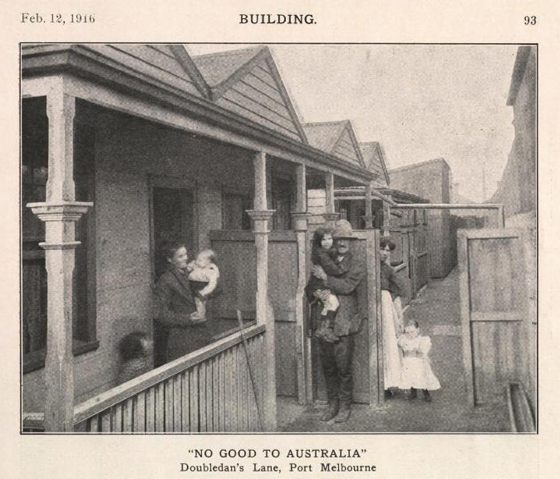
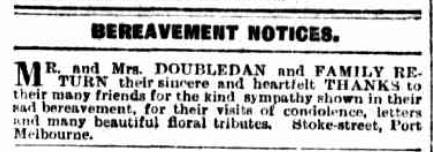
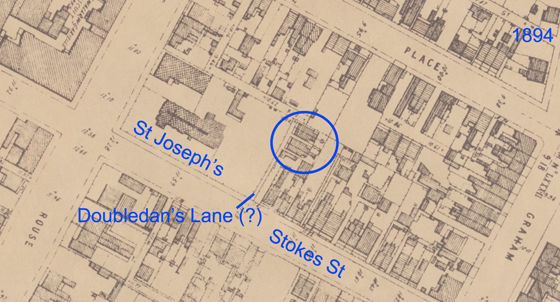
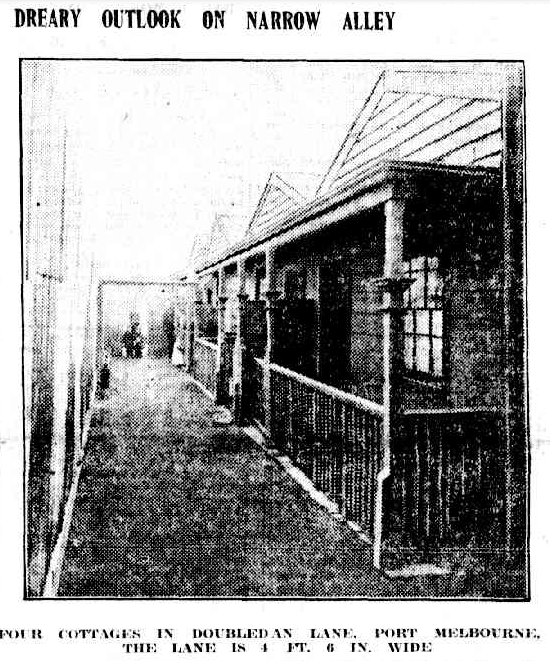
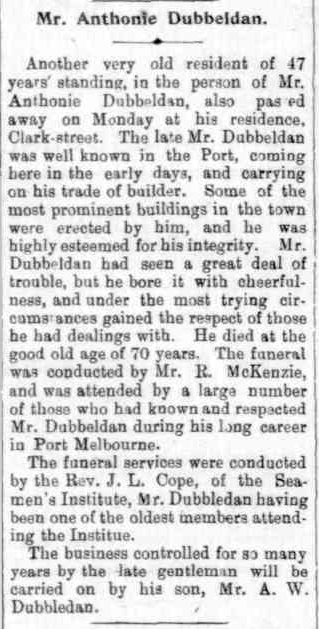
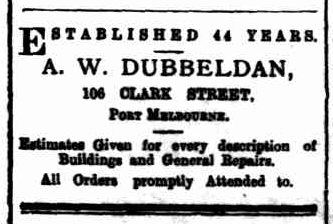
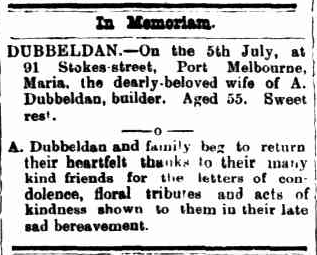
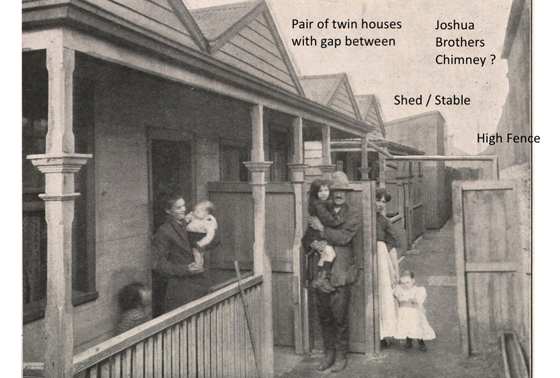
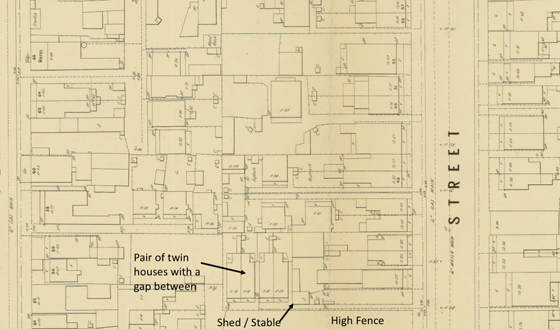
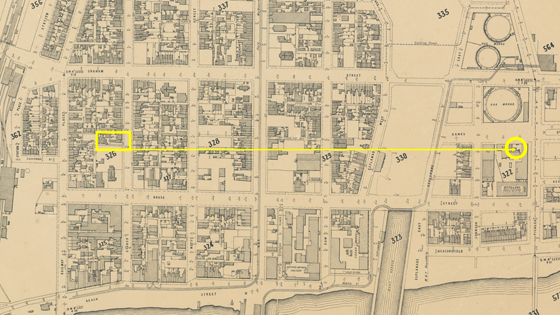
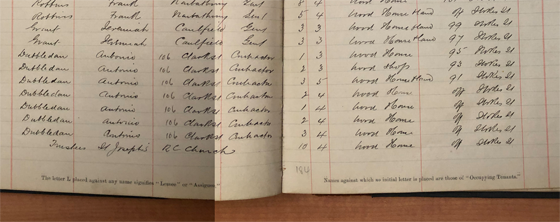
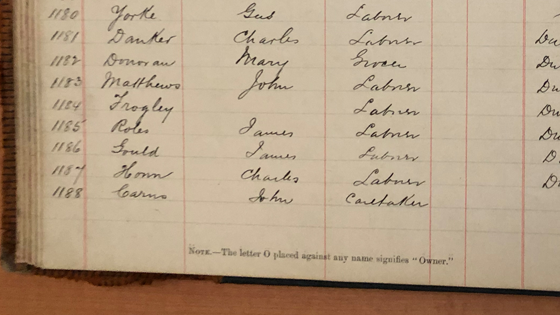

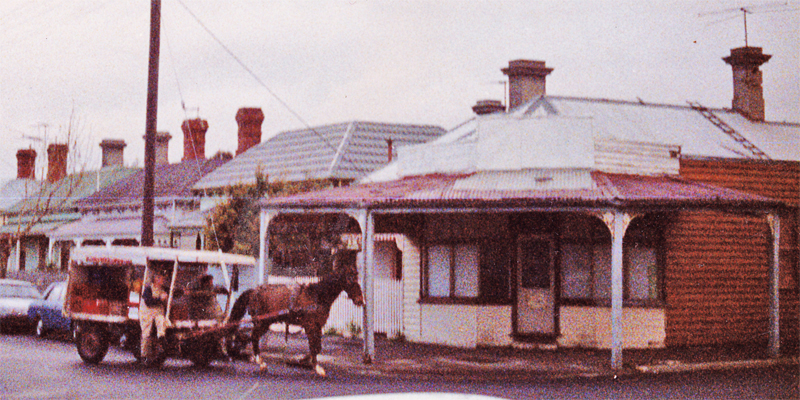
4 Comments
Ray Jelley
Hi Davids,
Great story.
I checked the Port People database and Anthonie Dubbeldam and his family were recorded in the early days of the original LDS database. Anthonie has the RIN of 426 and Maria Gibbons, his wife, 427. They were married at Holy Trinity on 3 October 1861 with their children being baptised there. The database also indicates that Anthonie’s parents were Anthonie Dubbeldam and Christina Roodna.
Cheers,
Ray
David Thompson
Thanks Ray,
Fantastic to know that they were married at Holy Trinity and the children baptised there. They were obviously around Sandridge/Port for a long time.
Bas Dubbeldam
Hoi David,
My name is Bas Dubbeldam and I try to find out where all of the Family Dubbeldam has lived / lives. The family is built in my computer and goes back till 1620. From 1620 untill 1900 most of my familymembers worked as farmers in the province of South-Holland in the Netherlands.
I found your story on Google and I was very happy to read it. This is for me extra information over Antonie’s life in Australia. Hereby some extra info over Antonie.
The name Dubbeldam is changed in many forms, so also to Dubbeldan / Dubbledan / Doubledan.
The following notes are the parents of Antonie in the Netherlands
Antonie Dubbeldam was born 03-04-1832 at Hardinxveld Netherlands
Antonie was a son of Antonie Dubbeldam and Christina Roodnat.
His father Antonie was born on 08-02-1801 at Boven-Hardinxveld (Netherlands)
Antonie was a son of Annigje Dubbeldam (father was unknown).
Annigje married with Pieter van Ameren on 11-11-1804 at Hardinxfeld
His mother Christina was born at 28-11-1795 at Ameide (Netherlands)
Christina was a daughter of Cornelis Roodnat and Judik Neeltje van den Heuvel
Christina was a widow of Bernardus Zeedijk (Married on 22-07-1816 at Nieuw-Lekkerland)
Antonie en Christina married at 28-02-1822 at Nieuw-Lekkerland (Netherlands)
Children as found in the Netherland of Antonie and Christina were:
1 Cornelis (man) born 16-11-1822 at Hardinxveld
In the period of 1824 – 1830 no children were found
2 Antonie (man) born 03-04-1832 at Hardinxveld
3 Willem-Jan (man) born 14-02-1834 at Hardinxveld
4 Christiaan (man) born 13-01-1836 at Ridderkerk
5 Antje (female) born 21-03-1837 at Ridderkerk
Antonie and Christina lived from 1836 till they died in Ridderkerk (Netherlands)
Antonie died at 29-09-1864 in wijk-B number 52b at 10:30 in de morning in Ridderkerk
Christina died at 01-12-1878 in wijk_B number 128 at 11:30 in the morning in Ridderkerk
I hope that you can use this info and thank you for work about Doubledan’s Lane.
greets
Bas Dubbeldam
from Barendrecht (the Netherlands)
David Thompson
Thank you Bas,
It is fascinating to go back a little bit further through the generations.
Regards,
David